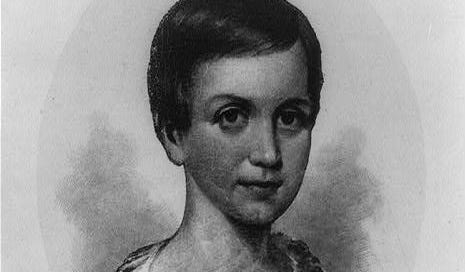"Hope is the thing with feathers
That perches in the soul,
And sings the tune without the words,
And never stops at all."
- Emily Dickinson
There are many words one can use to describe Emily Dickinson. For me, the first that comes to mind is independent. She lived as she wanted to live, once remarking about a decision she was making, "I am standing alone in rebellion." Making this feat that much more impressive is she did so during the mid-19th century, when women in the U.S. had few rights.
Emily spent much of her adult life in seclusion in her parents' home, often alone in the bedroom behind a closed door or outside in the gardens. The reasons for her reclusive nature in these years remain unclear, and many have posited theories. This biography will explore some later.
But in that time alone, Emily worked diligently, composing around 1,800 poems and numerous letters to acquaintances and friends. This latter part seems ironic. Yet, she was quite social in her earlier years, and though she at some point chose to stop seeing people outside of her family, Emily continued a healthy dialogue with many. As for her poems, they offer profound insights into the human soul, revealing much emotional depth with verses rich in introspection and insight, seamlessly delving into the profound mysteries of love, death and immortality, and nature's beauty.
Despite this prolific output, much of her work was discovered and published only after she passed away. And although one might reasonably expect the writings to answer questions about her life, especially with so many of her thoughts and feelings present in the prose, they do not. Emily wrote in a manner that she called "Tell all the Truth but tell it slant." Nearly a century and a half later, we are still pondering the questions and deciphering her truths.
Emily was enigmatic yet deeply personal. Today, she is beloved and one of America's most cherished poets.
Biography
Emily Elizabeth Dickinson was born in Amherst, Massachusetts, on December 10, 1830. Here, she grew up in the quaint, picturesque town of modest homes, sturdy barns, and the occasional white-steepled church, with expansive fields of small farms and orchards dotting the countryside, all nestled in the rolling hills of the Connecticut River Valley. With deep roots in agriculture, the town exuded an aura of quiet industriousness and, after the opening of Amherst College, a growing reputation in education.
Keep reading with a 7-day free trial
Subscribe to Historical Snapshots to keep reading this post and get 7 days of free access to the full post archives.




